Is Morro Bay safe for swimming?
Yes, most of the time in the locations we test.
Bacteria in the Bay

How to Read Estuary Health Symbols
The Estuary Health Symbols represent how the status of each question is changing over time. A round symbol indicates that the trend is stable. An arrow indicates an improving trend (up arrow) or a worsening trend (down arrow). The color of the base of the arrow indicates the status of historical data and the color of the triangular part of the arrow indicates the status of the newer data. The color of the symbol indicates the status as follows: Good/Very Good (green), Fair (yellow), Poor (orange), Very Poor (red), and Unknown (grey).

This symbol indicates that the water quality was Very Poor and has improved to Poor.

This symbol indicates that the trend is stable but we lack adequate data to assign a status.

Very Good/Good

Fair

Poor

Very Poor

Unknown
Indicator Symbol: Very Good/Good
Hover symbol for indicator information
The Morro Bay estuary is a popular recreation destination for tourists and residents. Clean water is essential for people to safely paddle, sail, kayak, and swim in the bay. Polluted water can contain things like bacteria, viruses, and protozoa that can make people ill. These pathogens can come from sources such as stormwater runoff, pet waste, agricultural operations, wildlife, treatment plant spills, and improperly operating septic tanks or boat-waste holding tanks.
To track bay bacteria concentrations each month, Estuary Program staff and volunteers collect and analyze water samples at bay shoreline sites where people often recreate.
How We Monitor Bacteria
Bay Bacteria Status
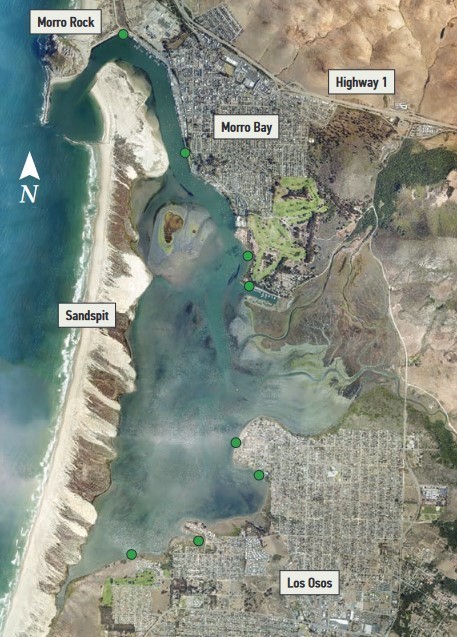
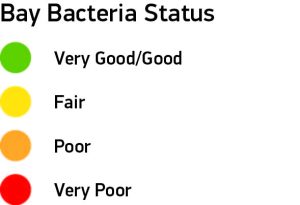
Other Bacteria Data
Another source of local bacteria data is Heal the Bay, an environmental nonprofit dedicated to making the Southern California coastal waters and watersheds safe, healthy, and clean.
Each year, Heal the Bay compiles a Beach Report Card that assigns an A to F letter grade to 500 California beaches using weekly bacteria results. The data comes from monitoring data from government agencies. Higher grades indicate a lower risk of illness to beachgoers.
The following table shows the grades for San Luis Obispo County beaches for 2020 to 2021. The data was separated into three categories. Data are assigned to the Summer Dry season when beach usage tends to be higher. The Winter Dry season is November to March and only includes times without rain. The Wet Weather data includes times with rainfall throughout the year. This is because stormwater runoff can transport pollutants such as bacteria into our coastal waters, impacting our beaches. In 2020 to 2021, SLO County beaches received very high grades. Three of our local beaches, including Morro Bay City Beach, made it onto the Honor Roll list for scoring perfect grades year-round.
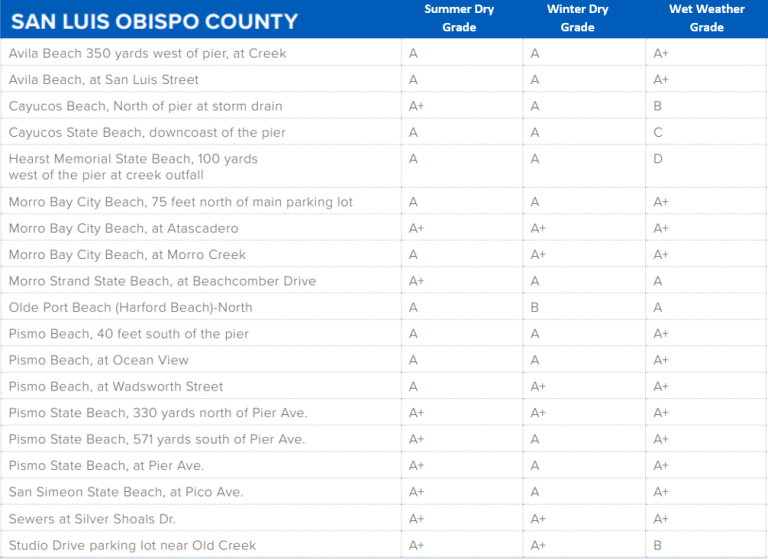
For comparison, here are results from some beaches throughout the state.
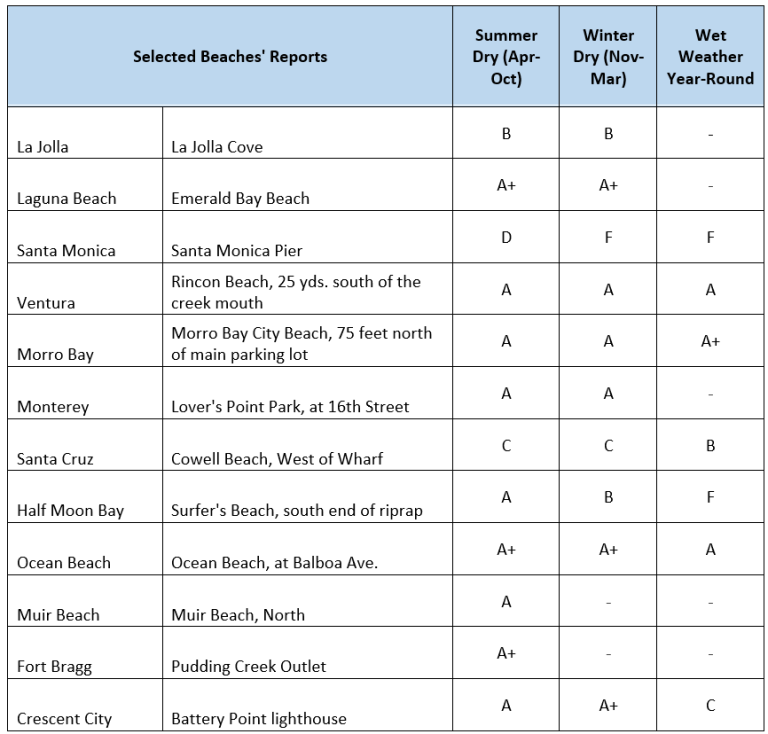
For the full report card, visit the Heal the Bay website.
Protecting Our Bay Waters: Picking Up After Pets
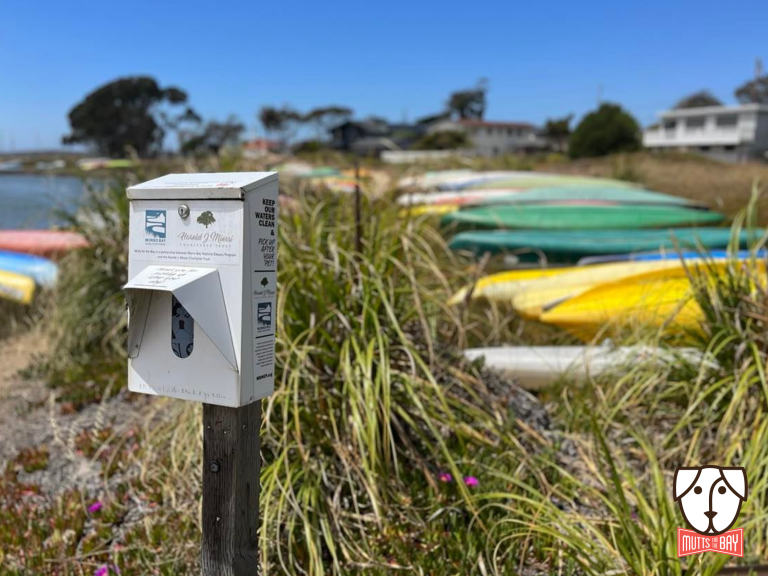
With approximately 5,500 dogs living in Morro Bay and Los Osos, an average of 19,000 pounds of dog poop is produced each week. If left on the ground, rain can carry bacteria from pet waste into local creeks and the bay, which can harm people and the environment.
The Estuary Program’s Mutts for the Bay program provides free pet waste bags at dispensers at parks and along public thoroughfares to make it easy for pet owners to pick up after their pets. We maintain 34 dispensers through the Morro Bay watershed in partnership with our dedicated community volunteers, private and business sponsors, and a generous grant from the Harold J. Miossi Charitable Trust. This grant has paid for the installation of four new dispensers and bags to help keep all of the dispensers stocked. The grant also supports our education and outreach efforts for students, community members, and visitors.
To learn more about the Mutts for the Bay program and how you can help, visit our website at https://www.mbnep.org/mutts-for-the-bay/
Protecting Our Bay Waters: Stormwater Management
At the Estuary Program, we always get excited when the rainy season hits. While rainfall brings fresh water to our watershed, it can also cause pollutants like fertilizer and pet waste from our streets, parking lots, driveways, and yards to be flushed downstream. The Estuary Program supports projects that prevent pollutants from being carried into our bay during winter rains.
The State Park Marina is a popular spot for visitors and residents. The area has a large paved parking lot with cracked and broken pavement that was starting to show its age. The parking lot was sloped so that rainfall was funneled off the parking lot and directly into the bay without any treatment.
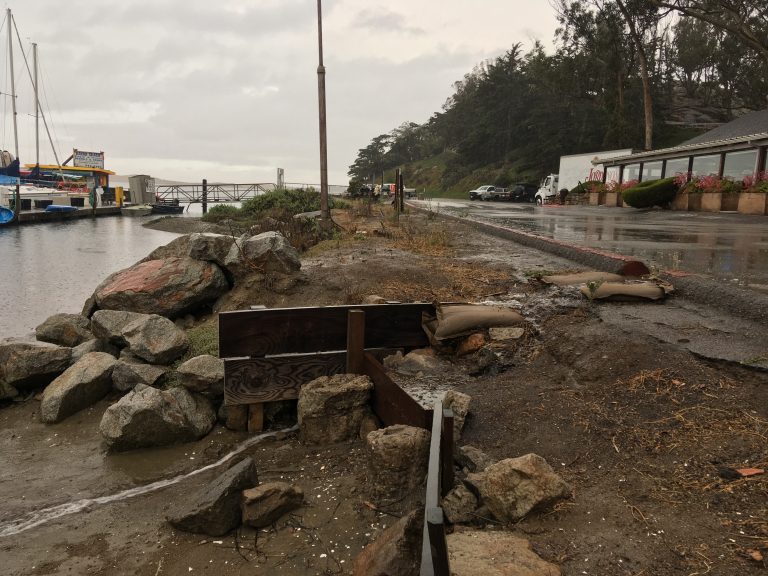
The Estuary Program worked with State Parks and the California Marine Sanctuary Foundation to obtain grant funding from the Ocean Protection Council to construct an improved parking lot and Best Management Practices (BMP) structures to treat the runoff. Construction was completed in spring 2022.
To treat the runoff before it enters the bay, structures called bioswales were installed along the bayside edge of the parking lot. This involved digging out a trench and filling it with filter fabric and gravel and soil of specific sizes to encourage water to sink into the trench. Plants were installed on the bioswales. Parking lot runoff is directed into the bioswales where the plants and the materials in the trench help filter out pollutants before the water is discharged into the bay.
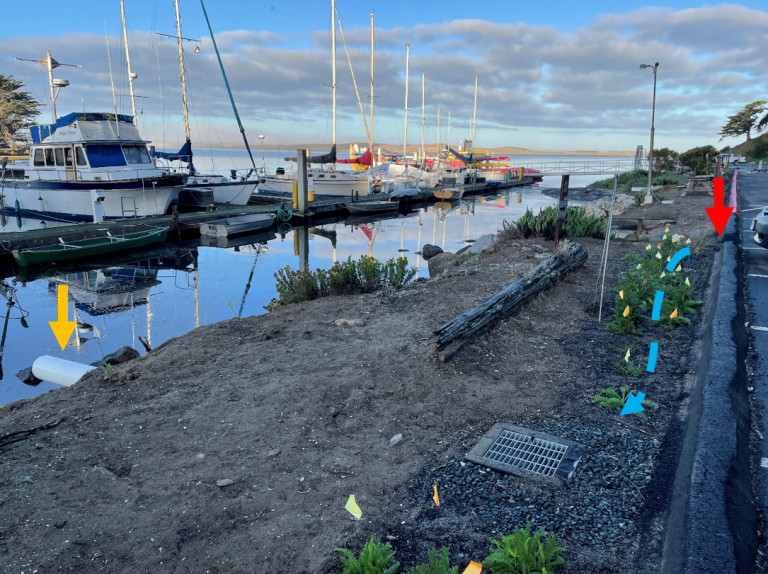
To assess how effectively the project is working, stormwater runoff was collected and analyzed from storms before and after project installation. Pre-project data indicated elevated bacteria and sediment concentrations reaching the bay. With construction complete, storm sampling is underway to assess the effectiveness of the project. Stay tuned for results!
For more information on the project, see our blog post.
Data Notes
Mutts for the Bay Blog post: Mutts for the Bay Helps Keep Morro Bay Clean (mbnep.org)
Stormwater Runoff Blog post: Dec. 2022 Field Updates: Stormwater Runoff & Tracking Rainfall (mbnep.org)
Heal the Bay 2020-2021 Beach Report Card: Beach-Report-Card-2020-2021.pdf (healthebay.org)
Heal the Bay Website (Report Card Homepage): Heal the Bay Releases Annual Beach Report Card & River Report Card 2021 – Heal the Bay
State Water Ambient Monitoring Program report card score calculation: https://www.waterboards.ca.gov/water_issues/programs/swamp/docs/workplans/hw_swamp_methods_report.pdf